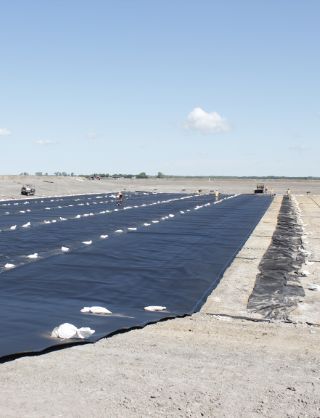It’s an appropriate moment to adapt Buzz Lightyear’s signature cry to the economy and to declare: “To immunity and beyond!” The statistics on vaccine distribution seem to be improving just about everywhere, and as a more generalized reopening seems imminent, companies and individuals are gearing up for a surge of activity. If that’s really what’s in the works, what will the journey look like?
First off, it’s going to be a rocket launch. In fact, ignition is already behind us, but the G-force is going to increase considerably as we move into the second half of the year. First, we have the regular recovery of sectors that are still in the abyss, brought on as more countries zero in on herd immunity. Second, there’s ongoing public stimulus—primarily the US$1.9-trillion plan currently unfolding in the United States. And third, pent-up demand will reinforce growth, aided greatly by the massive pileup of business and consumer cash in demand deposit accounts in the U.S., Europe, Canada and elsewhere.
The dynamics of this growth are evident in EDC Economics’ new Global Economic Outlook. We have revised up growth for 2021 in the U.S. economy to a whopping 7.1%. At 4.6% growth, the Eurozone isn’t as aggressive, but is still well above its long-term trend rate, and is expected to repeat this pace in 2022. Emerging economies will see explosive growth as they recover from last year’s drubbing, and as the revival in the industrialized world feeds global demand for goods and services. Collectively, emerging market growth will reach 6.5% this year and will accelerate further to 6.8% growth in 2022. As such, world growth will hit an outsized 6.2% for 2021 followed by a very impressive 5.7% next year.
You should also check out
Discover insights and advice on the key economic indicators impacting Canadian companies in 2021.
The rocket ride won’t be particularly smooth. What the pandemic has shown us is that we can turn off an economy pretty quickly—we just have to say the word. Getting it going again is a different matter—we can declare it open, but it’s then up to the return-to-work decisions of businesses and labour, which aren’t necessarily synchronized and linear.
That’s showing up in current prices. Rapid growth has led to shortages of key industrial inputs, including wood products, foodstuffs, base metals and semiconductors. As such, prices are rising at a monthly pace that at the very least is concerning. Upstream producer prices in the U.S. are red-hot, and the effects are immediate on final prices. Canada is following suit, while Europe is a bit more stable. Central banks are united in their belief that this is temporary, but they are taking different policy positions—with the European Central Bank and the U.S. Federal Reserve Board standing pat, and the Bank of Canada signalling tightening. We believe that price growth will moderate through 2022, and that’s reflected in our commodity price projections.
Even so, there’s a significant risk that inflation expectations will rise. Labour markets keep tightening, and industry is once again flagging skilled labour shortages, which will only be exacerbated if sidelined money flows into the economy soon, not to mention the impact on existing physical capacity constraints. If so, monetary policy might find itself in catchup mode, which isn’t a pleasant prospect. As things stand, we can expect financial market volatility to persist during the uncertain transition period before prices and exchange rates settle down into 2022. Canada’s exchange rate is expected to average US$0.81 in 2021 and US$0.82 next year.
The rise in global demand will be the main driver in Canada’s near-term growth. This is evidenced by the surge in EDC’s Trade Confidence Index, which strongly suggests that Canada’s exporters are arming themselves for a roaring second half of the year. All told, Canada is forecast to grow by a stunning 6.1% this year and an impressive 4% in 2022.
Until this point, downside risks to forecasts have predominated. While it’s still possible that infection rates rise and recovery is delayed, there’s now a greater chance that in our exuberance, we overdo it a bit. There’s certainly enough pent-up pressure for this to occur, and given local capacity constraints, there’ll likely be more than enough business for everyone to chime in on.
The bottom line?
Our global forecast may seem optimistic; it’s not. As more businesses are realizing, it’s aggressive, but quite realistic. Optimists have good reason to boost even our outsized numbers. Either way, the best business strategy is to make sure you can capture as much of the coming activity as possible. It’s going to be one of the most exhilarating economic rides we have seen in a long time.
The Weekly Commentary is taking a pause for the month of July and will return on Aug. 5. Stay well and see you then.
This commentary is presented for informational purposes only. It’s not intended to be a comprehensive or detailed statement on any subject and no representations or warranties, express or implied, are made as to its accuracy, timeliness or completeness. Nothing in this commentary is intended to provide financial, legal, accounting or tax advice nor should it be relied upon. EDC nor the author is liable whatsoever for any loss or damage caused by, or resulting from, any use of or any inaccuracies, errors or omissions in the information provided.







